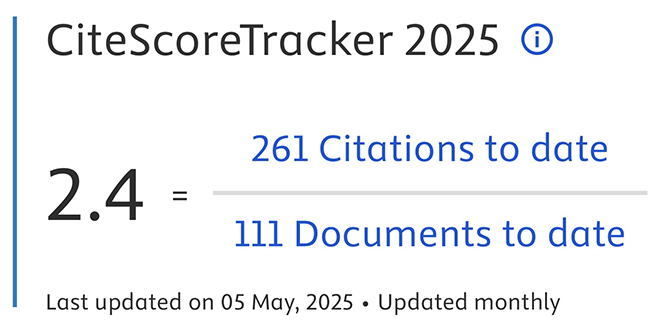The technological reasons of the project: experiences from the School of Pescara
DOI:
https://doi.org/10.19229/2464-9309/3122018Keywords:
technology of architecture, technological-environmental design, technological culture of design, built environmentAbstract
This contribution, by looking at several experiences from the School of Architecture of Pescara, proposes some reflections regarding three emergent reasons that confirm how important it is that the training of future architects contain technological subjects. The relational reason, the reason of the processes and the performance reason can contribute in defining the multi/inter/transdisciplinary horizons of didactics, which are becoming more and more necessary when tackling the complexities of the habitat; both to bring it in line with the working market’s demand for new competences and to develop abilities to relate on more than one level and in multiple scales and temporal interventions.
Downloads
Article Metrics Graph
References
Aldersey-Williams, H. (2011), Periodic Tales – The Curious Lives of the Elements, Penguin Books, London.
Capra, F. (1997), La rete della vita – Una nuova visione della Natura e della Scienza, Rizzoli Editore, Milano.
Chynoweth, P. (2009), “The Built Environment Interdiscipline: A Theoretical Model for Decision Makers in Research and Teaching”, in Structural Survey, vol. 27, issue 4, pp. 301-310.
Emmitt, S. (2012), Architectural Technology, Wiley-Blackwell, Oxford.
Friedman, Y. (2015), L’architettura di sopravvivenza – Una filosofia della povertà, Bollati Boringhieri, Torino.
Garofalo, F. (2016), Cosa è successo all’architettura italiana?, Marsilio, Venezia.
Giallocosta, G. (2006), “L’approccio sistemico nella gestione di fenomenologie interscalari”, in Di Battista, V., Giallocosta, G. and Minati, G. (eds), Architettura e approccio sistemico, Polimetrica, Milano.
Gillies, D. (1998), Intelligenza artificiale e metodo scientifico, Raffaello Cortina Editore, Milano.
Griffiths, R., (2004), “Knowledge production and the research-teaching nexus: the case of the built environment disciplines”, in Studies in Higher Education, vol. 29, issue 6, pp. 709-726.
Guazzo, G. (2003), “I molti modi del pensiero progettuale”, in Bertoldini, M. and Zanelli, A. (eds), Tecnica, progetto e scienze umane, CLUP, Milano.
Kristiansen, P. and Rasmussen, R. (2014), Il metodo Lego® Serious Play® per il business, FrancoAngeli, Milano.
Maldonado, T. (1970), La speranza progettuale – Ambiente e società, Einaudi, Torino.
Manzini, A. (2015), Design when Everybody Designs – An Introduction to Design for Social Innovation, The MIT Press, Cambridge (MA).
Morin, E. (2000), La testa ben fatta – Riforma dell’insegnamento e riforma del pensiero, Raffaello Cortina Editore, Milano.
Nardi, G. (2011), Tecnologie dell’Architettura – Storie e cultura, CLUP, Milano.
Ratti, C. (2014), Architettura Open Source – Verso una progettazione aperta, Einaudi, Torino.
Schiaffonati, F. (2017), “Per una centralità della figura dell’architetto”, in EcoWebTown | Journal of Sustainable Design, vol. II, issue 16, pp. 17-23. [Online] Available at: www.ecowebtown.it/n_16/16_03-schiaffonati-it.html [Accessed 18 April 2017].
Spadolini, P. (1988), “Civiltà industriale e nuove relazioni nel territorio”, in Gurrieri, F. (ed.), Pierluigi Spadolini – Umanesimo e tecnologia, Electa, Milano.
Tagliagambe, S. (1998), L’albero flessibile – La cultura della progettualità, Dunod, Milano.
Tucci, F. (2017), “Per un Manifesto della Green Economy verso l’Architettura e la Città del futuro”, in Antonini, E. and Tucci, F. (eds), Architettura, città e territorio verso la Green Economy, Edizioni Ambiente, San Giuliano Milanese.
Vittoria, E. (1975), Argomenti per un corso di tecnologia dell’architettura, Multigrafica Brunetti, Roma.

Downloads
Published
How to Cite
Issue
Section
License
This Journal is published under Creative Commons Attribution Licence 4.0 (CC-BY).
License scheme | Legal code
This License allows anyone to:
Share: copy and redistribute the material in any medium or format.
Adapt: remix, transform, and build upon the material for any purpose, even commercially.
Under the following terms
Attribution: Users must give appropriate credit, provide a link to the license, and indicate if changes were made; users may do so in any reasonable manner, but not in any way that suggests the licensor endorses them or their use.
No additional restrictions: Users may not apply legal terms or technological measures that legally restrict others from doing anything the license permits.
Notices
Users do not have to comply with the license for elements of the material in the public domain or where your use is permitted by an applicable exception or limitation.
No warranties are given. The license may not give users all of the permissions necessary for their intended use. For example, other rights such as publicity, privacy, or moral rights may limit how you use the material.


















































































